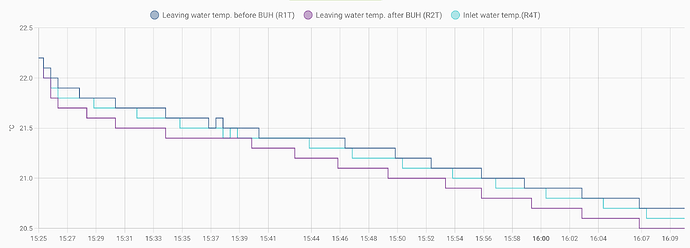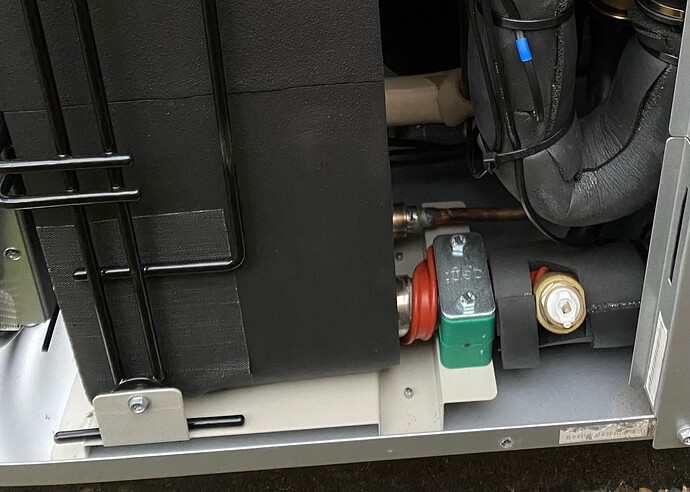@John @Stephen_Crown
I have some new data following the visit from the Daikin engineer’s visit on Friday.
As soon as I re-installed ESPAltherma, it was clear that the temperature readings were making much more sense.
I now get very good agreement between R1T, R2T and R4T. Here’s the new “calibration” run:
The values are within 0.2C of each other - down from a spread of 1.8C! 
So, from a sample size of 1, the thermistors are pretty good.
I am now convinced that two tape heaters E11H (inlet) and E12H (after heat exchanger) were active whenever the water circulation pump was running and they were significantly distorting the R4T and R1T temperature readings.
I’ve been running the pump at “60% limit when sampling” and used to see the pump using about 128-132W when circulating the water overnight to prevent freezing. I’m now seeing 66W usage, a reduction of 66W, which matches 33W for each of the two tape heaters.
I don’t know why the tape heaters were configured this way and the engineer was vague on what he did, other than “check the wiring, and fix it”. It’s not clear to me whether the units were manufactured this way deliberately, accidentally or if it was some change that was made during installation. I’m going to report back to my Daikin contact and see if this is a systematic problem.
I’ve got some photos of the X7M connector where the heaters (initially) connect, but only after the engineer’s visit. I don’t know if that’s what he fixed, or elsewhere. Let me know if you want to compare.
I am also seeing much better performance since the change:
- I ask for a delta T of 4C, and I get it (once the pump has settled)
- the pump speed is higher - up from ~12l/min to more like 16l/min
- COP is around 20% better* (still not stellar performance from my system with small-ish rads, but much more in the realms of what I think is decent performance)
I’m going to go and experiment with other settings now (fancoils instead of underfloor, dT 5 instead of 4, tweaking flow rates etc.) to see how much more efficiency I can extract. Heck, I might even try the Madoka with some mild modulation again!
@John since you have an engineer visit booked, I’d definitely see if you can persuade them to investigate these tape heaters.
If you are prepared to remove the heat pump cover again, the inlet tape heater is the orange/red tape here:
It showed up nice and hot on my thermal camera, but was also noticeably warm to the touch.
*The Daikin engineer also installed some new firmware, but my gut feeling is that the fix for the heaters is the dominant factor
![]()

